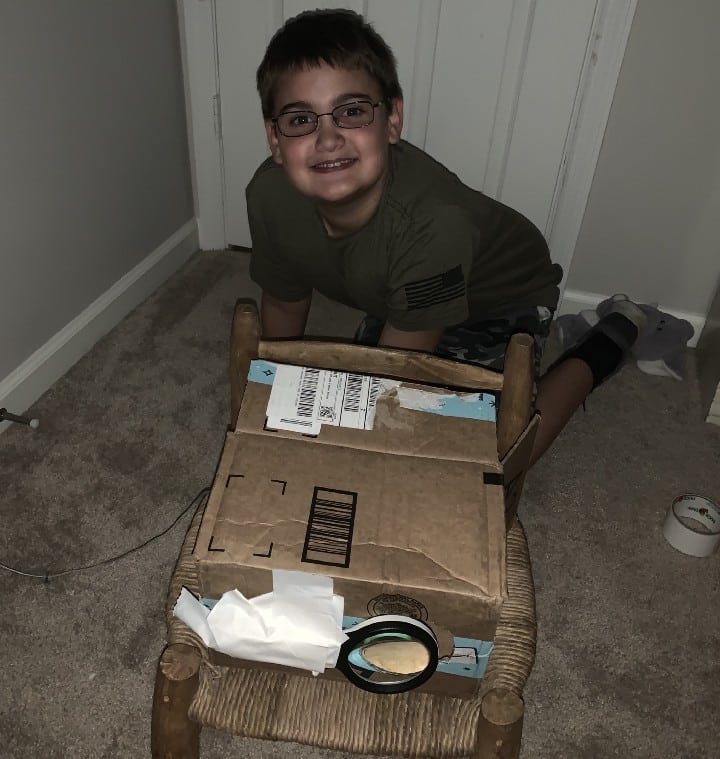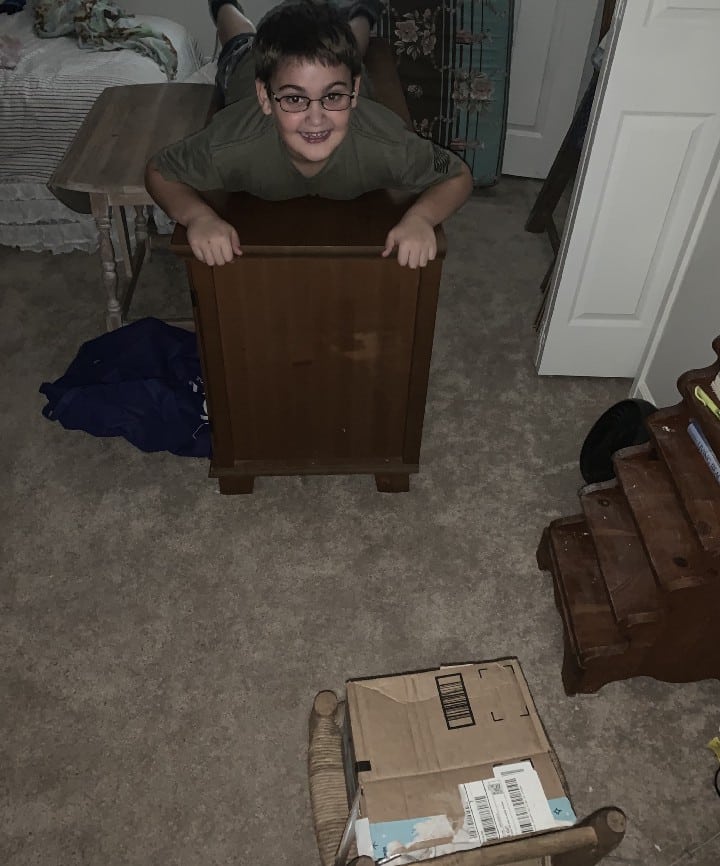My ten-year-old grandson, Liam, has a creative and inventive mind. When he is at Camp YaYa (i.e., over at our house), he is constantly looking for materials he can experiment with. Sometimes he builds with no specific project in mind, but he’ll continue to create until he ends up with something, like a cardboard fort. He’s also been known to simply work with tools for no other purpose than to understand how they operate. Other times Liam has an end result in mind. On those occasions, he will come up and ask for some material without revealing what he needs it for. As long YaYa believes what he is asking for is not inherently dangerous, she will provide it as he has demonstrated in the past that he can use tools safely (well, as safely as any ten-year-old I know can …).
It was a gross and rainy day outside when Liam was “working with a purpose.” He had asked for specific items without revealing what he was trying to create. After about an hour of work, he announced that we could come see his “invention.”

It was not immediately apparent what he had created. A medium-sized cardboard box was clearly the base, but it had several elements attached to it—the most prominent object being a large magnifying glass. Once we had gotten a good look at his invention, Liam proudly stated, “Let me demonstrate this!” He then turned off the lights, borrowed a mobile phone, opened a web browser and started playing a video. He placed the phone inside the box and, lo and behold, an image was projected against the “screen” that was opposite the contraption. Liam had created a camera obscura. I am confident he had no idea of the concept of a camera obscura, but he was convinced that he could make a projector and set about to make it happen.
One problem with his invention was the camera obscura flipped the projection 180 degrees. Liam quickly found a simple solution by laying on top of the projector and watching the images upside down.

Here’s the point: If you have a young person in your life that shows any creativity or inventiveness, encourage it! They may make a mess, and it can be frustrating to continually remind them to clean up after themselves. However, you should never criticize their creativity. Allow their imagination to flourish. Resist the temptation to provide them with too much oversight. Answer questions and provide advice, but only when asked. Struggling through adversity is the best way for young inventors to learn about problem solving. Besides, chances are they are already watching a YouTube video on how to work out their problem.
How are you supporting and encouraging young innovators? Look for every opportunity to spur creativity …
